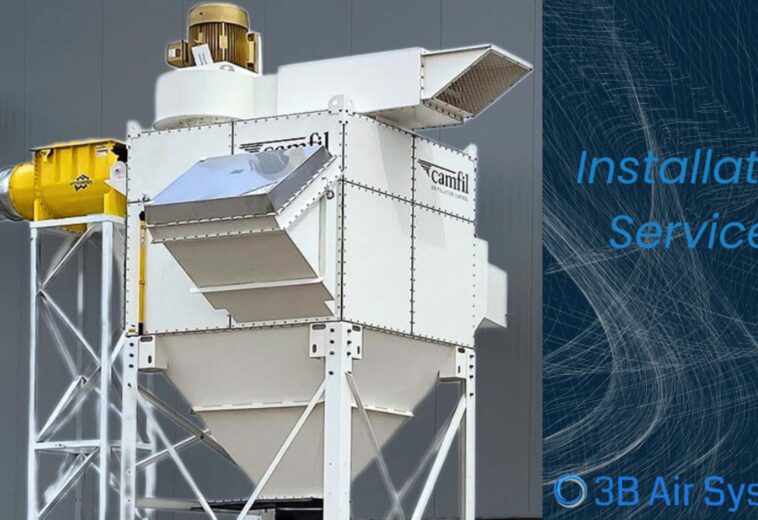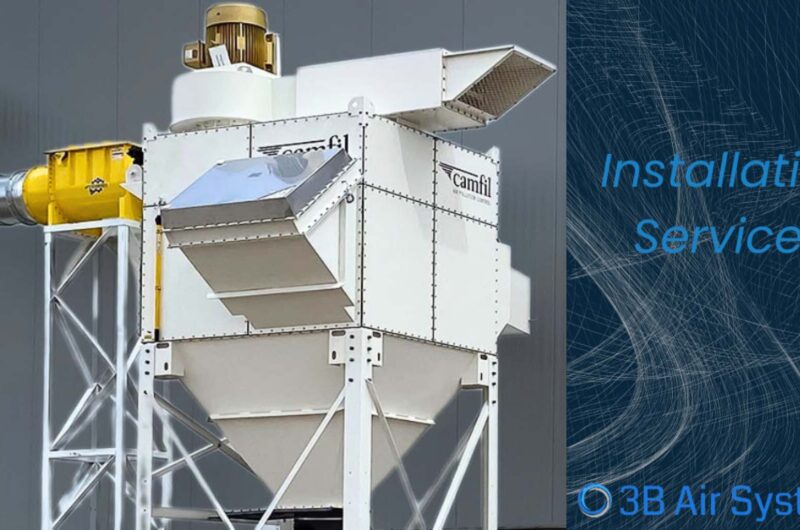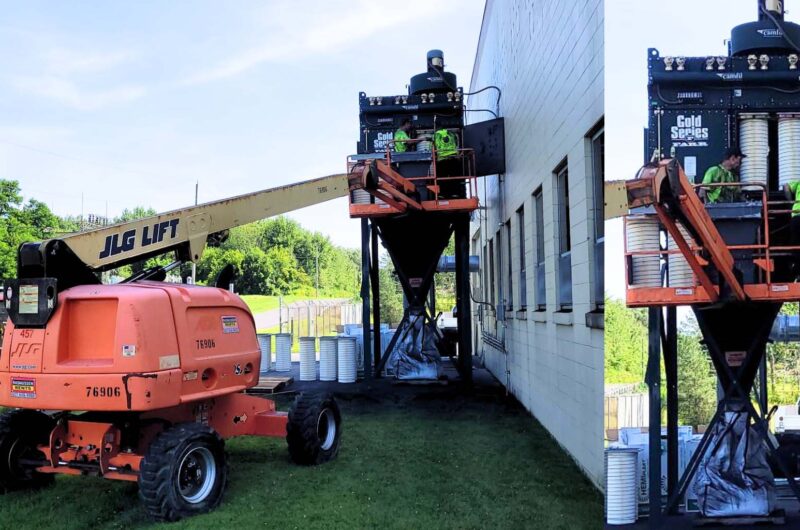
- September 30, 2024
- 46 views
- 0 Comments
Industrial Ductwork in Manufacturing
Every manufacturing facility has industrial ductwork that is responsible for moving clean air into the facility or particle-filled air out. The ductwork is directly responsible for improving the air quality in manufacturing environments.
While the concept is simple, the design, materials, and construction of the ductwork is intricate and depends on engineering expertise to work properly and efficiently.
Design
When designing a new ductwork system, making sure you size it appropriately is vital. The following problems can occur with improper sizing:
-
- Excessive noise
- Accumulation of particulates in the ductwork
- Improper ventilation in the work environment
- Lifespan reduction of the ductwork & the dust collection system
- Over-filtering of the manufacturing environment to extract valuable industrial components from products
Now that we know what problems can occur, what is the solution to preventing these? When it comes to sizing the system, there are (3) main things to consider: Current air quality measurements, the size of the industrial space, and safety.
Measuring Air Quality
To determine the size of the ductwork needed, you need to know the amount and size of the dust, allergens, and/or contaminants that will be moving through it.
So how do you measure it? While there are tools you can acquire to take air quality measurements, the most fool-proof method is to contract a vendor to provide professional IAQ (Indoor Air Quality) testing. They will be able to identify the contaminants and determine the amount of pressure (negative or positive) needed to keep your facility’s air quality within OSHA’s Permissible Exposure Limits.
The Size of the Space
Each enclosed industrial space has a unique set of requirements for airflow and ventilation rates. If the size of your ductwork is too large for your space, the material moving through it will fall out and lay in the bottom of the duct. If the ductwork is too small, the particulates will keep moving but will require a larger fan size to pull the large air volume through the small ductwork. This would be inefficient and if moving abrasive material, will cause wear throughout – particularly in the branches and elbows of the industrial ductwork.
How do you determine the right ductwork size? Know the total CFM that needs to move through it. You determine this by a.) the volume of the room and b.) the frequency at which you need to exchange the air.
The volume of the room is gathered by multiplying the total area by the average height. The frequency is determined by the air exchange rate (ACH) for your environment.
Air Exchange Calculation: ACHP = 60(Q)/Vol.
-
- ACPH = number of air changes per hour; higher values correspond to better ventilation
- Q = Volumetric flow rate of air in cubic feet per minute (CFM)
- Vol = Space volume L × W × H, in cubic feet
Additionally, you should consult your local government, OSHA and/or the EPA for specific requirements for your facility and its location.
Now that we’ve determined the air quality requirements and the size of the space, we must determine the materials needed and the construction required.
Safety Considerations
Knowing whether your application will convey and collect abrasive material or if it is a combustible dust application where static dissipative properties and/or ground wires are needed, will determine the ductwork hosing required.
Industrial Ductwork – Materials of Construction
There are (2) main materials used in industrial ductwork – galvanized and stainless steel. Your application will determine which one is the best fit for your facility.
Galvanized
Galvanized ductwork is used when you need to protect against corrosion. It protects the sheet metal used for the duct straights and fittings from rusting, which ensures longevity. Galvanized ductwork is generally used for the following applications:
-
- Outdoors
- Wood, lead or cement dust
- Vehicle, paint booth or coffee roaster exhaust
- Welding fumes
Stainless
Stainless steel ductwork is generally used to convey a corrosive or reactive product as the raw steel is blended with an alloy that protects against rust and corrosion, making it more resistant than galvanized metal.
It is recommended for applications involving long-term exposure to corrosive materials or environments with elevated chloride exposure. Industries that commonly use stainless steel ductwork include:
-
- Food & beverage
- Nuclear
- Waste & energy from waste
- Chemical processing / pharmaceutical
- Wastewater
Reach Out
Ductwork matters – a lot! And getting it right is a complicated and intricate process. At 3B Air Systems, we will carefully design and integrate your new industrial ductwork! With our trusted network of suppliers, we source the right combination of materials, parts, components, and expertise to meet your unique needs.
Contact us today to get started!




